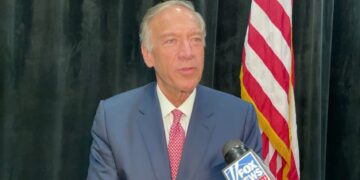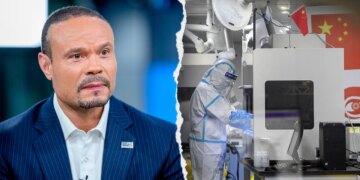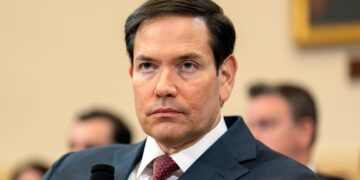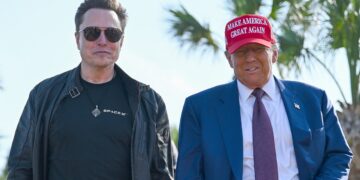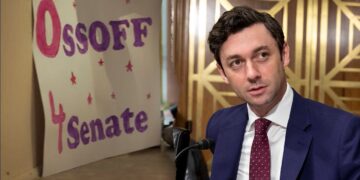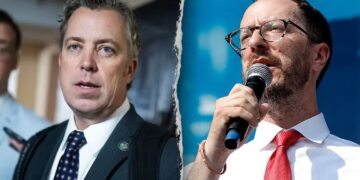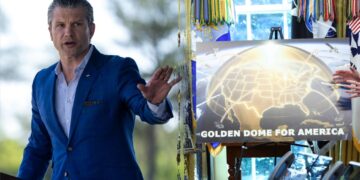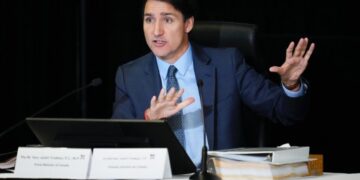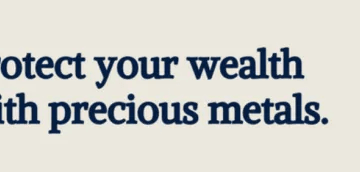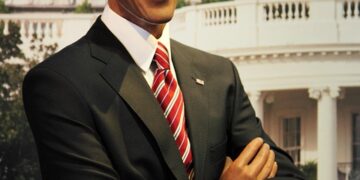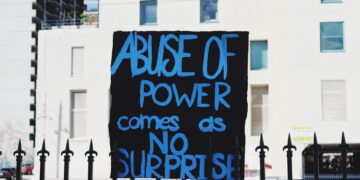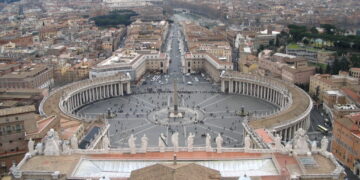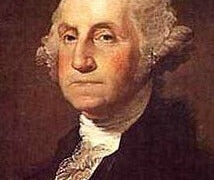In late April, Mark Carney’s Liberal Party won enough seats in Canada’s Parliament to form a government. While the Liberals failed to obtain a majority — winning 169 seats when 172 are needed — Carney, the anointed replacement of Justin Trudeau with a deep establishment background, beat Conservative opposition leader Pierre Poilievre in the much-anticipated federal election.
“They both are globalists, but Carney is the globalist-in-chief,” Maxime Bernier, former member of Parliament, minister of foreign affairs, and leader of the People’s Party of Canada, told The New American, comparing the candidates.
With Carney’s victory, Canada is locked into years of unchained mass migration, enforced “sustainable” energy production, and economic turmoil.
Trudeau Out, Carney In
After a decade of leading the nation as prime minister, Justin Trudeau stepped down in March 2025. He left the Great White North with a massive deficit, a housing crisis, an annual migration of a million immigrants, and a shrinking energy supply because of failing green-energy policies.
In December 2024, Trudeau had a 22-percent approval rating, and Pierre Poilievre’s Conservatives were expected to defeat him handily. Then everything changed.
Due to irreconcilable differences in economic policy and how to handle incoming U.S. tariffs, Canada’s finance minister, Chrystia Freeland, resigned. Weeks later, Trudeau followed, revealing that he would be stepping down as prime minister.
Canada’s government is structured as a constitutional monarchy and a parliamentary democracy. The prime minister is elected by the majority party in power in Parliament, and is not directly elected by the people. Trudeau exiting stage left cleared the way for Carney to slip in as the Liberals’ “new” face. Carney, who has never been a member of Parliament, was elected in a leadership vote, and sworn in on March 14.
“The same people are in charge — the same orchestra, the same repertoire,” Senator Michael MacDonald, representing Cape Breton, Nova Scotia, told The New American. “[Carney is] just a different conductor with the baton in hand.”
A mere nine days after taking over from Trudeau, Carney called for a snap election to seek a strong mandate, hoping for Liberals to gain more seats in Parliament to handle Canada’s economic crisis. “We need to build the strongest economy in the G7. We need to deal with President Trump’s tariffs,” he said in a post on X. “Canadians deserve a choice about who should lead that effort for our country.”
Election Results
The Liberals won 26 more seats than the Conservatives, securing Carney’s victory. Conservative leader Poilievre even lost his own seat in Parliament to Liberal Bruce Fanjoy, a first-time politician and stay-at-home dad. Poilievre’s electoral district in Carleton — surrounding the southern areas of Ottawa — had a staggering 91 candidates vying for his seat. In contrast, the top six races for Parliament, including Carney’s, had a maximum of six candidates in each race.
Eighty-five of the 91 candidates in Poilievre’s district had ties to an advocacy group called the Longest Ballot Committee, which targets certain candidates to allegedly spark debate about democracy and election reform. However, the group only targeted Poilievre, in what Tanya Gaw, the founder of the grassroots educational organization Action4Canada.com, told The New American was a “coordinated” effort to take him down.
Surprisingly, youth gravitated toward the Conservatives before the election. According to a Nanos poll released April 25, Conservatives bested Liberals 44 percent to 31.2 percent among 18- to 34-year-olds.
The sudden shift toward the Liberals during the actual election was in part due to the threat of tariffs from President Donald Trump and Trump’s rhetoric about Canada becoming the 51st state. “That was not a traditional election,” Bernier explained to The New American. “I must say that it was mostly a referendum against [becoming] the 51st state.”
“We cannot have a trade war against the U.S.,” said Bernier, who ran for Parliament in an electoral district of Quebec but lost. “The U.S. is 10 times bigger than us. So, let’s have a real policy and a real debate about what is going wrong in this country.”
The mainstream media helped provoke the anti-Trump ire of Canadians to squelch the lead of the Conservatives. Already left-leaning baby boomers were enraged by Trump’s remarks to annex the nation, for instance. “Trump’s tariff ideas and 51st state rhetoric definitely impacted the election,” MacDonald told The New American. “The MSM [mainstream media] in Canada were obsessed with it, and the Liberals exploited both TDS [Trump derangement syndrome] and anti-Americanism, something very successful with low-information voters and Baby Boomers who only watch the evening news on the major newscasts.”

Carney’s Financial Background
Despite never holding any public office before becoming PM, Carney has been a significant political figure, acting as “a career banker and climate advocate with the globalist mindset of a true Davos man,” as Politico put it.
Carney’s financial career began with 13 years of climbing the ladder at Goldman Sachs. In 2003, he became deputy governor of the Bank of Canada. For three years, he was the senior associate deputy minister and G7 deputy in the Department of Finance Canada.
Then, in 2008, he took over the governorship of the Bank of Canada. He was at the helm during the 2008 financial crisis, and boasts that his tenure protected the nation during one of “the most turbulent economic periods in modern history.”
Carney crossed the Atlantic in 2013 to become the first non-British head of the Bank of England since its formation in 1694.
Staying at the post throughout Brexit — the U.K.’s successful campaign to leave the European Union — Carney was a strong opponent of separation, warning that a recession was likely to occur if the nation reclaimed some of its sovereignty. Drawing mass criticism for his fearmongering, he received pressure to resign for his partisanship. But, as one of his spokesmen told the BBC in 2016, Carney felt it “a duty” to make his position known.
The recession never happened.
Ending his tenure at the Bank of England during the beginning of the global Covid-19 response, he then became the Brookfield Corporation’s vice chair and the “firm’s ESG [environmental, social, and governance]-focused investment strategist,” a 2020 press release from the Canadian-American alternative asset manager states.
Carney also served as an “informal adviser to Prime Minister Justin Trudeau on the federal government’s response to the COVID-19 pandemic,” according to the state-funded Canadian Broadcasting Corporation. Poilievre tried to expose the connection between Carney and Trudeau to blame him for the tanking of Canada’s economy: “As Trudeau’s economic advisor, Carney made Canada weaker and poorer. And working for himself, he made America stronger and richer. Carney cashed in and Canada lost out.”
Carney tried to distance himself from that role during Canada’s federal leadership debate before the election: “I did not provide any of that advice,” he responded to Poilievre.
But according to senior government officials surrounding Trudeau in 2020, Carney “certainly has been advising the PM through different phases of this [Covid-19].” “I’d hope we can count on him for more,” one source added.
“To me, he was responsible for the financial collapse of Canada,” Gaw said, noting that Carney’s connections to globalist organizations troubled her.
Carney’s curriculum vitae as a globalist is rather extensive. He was a member of the Group of 30 (G30), held a position on the Foundation Board of the World Economic Forum, and attended the notorious Bilderberg meetings in 2011, 2012, and 2019. As PM, Carney will be “slavish” to the UN and WEF agendas, according to MacDonald.
Carney’s Climate Carnage
With his background in banking, Carney has labored to drag Canada’s private sector into the fight against man-made “climate change.” He became the United Nations’ Special Envoy on Climate Action and Finance in 2020, and launched the Glasgow Financial Alliance for Net Zero in 2021 at COP26, aimed at bringing financial institutions together to achieve net-zero emissions of CO2,the gas of life.
Net-zero emissions through the green transition are “the greatest commercial opportunity of our time,” Carney has said.
In his 2021 book Value(s): Building a Better World for All, he parrots talking points from the United Nations and World Economic Forum: “The second great wave of globalisation is cresting. The Fourth Industrial Revolution is just beginning. And a new economy is emerging, driven by immense changes in technology, the reordering of global economic power and the growing pressures of climate change.”
Carney advocates for a series of “solutions” that the world “must focus on” to defeat the changing climate. Chiefly, carbon-capture pipelines, a carbon tax, and net-zero emissions of CO2. “Over the next three decades,” he asserts in his book, “the total required investments in the energy sector alone will be $3.5 trillion per year. Another $50 to $135 billion per year will be needed to develop and scale carbon capture and biofuel technology.”
To fund this massive expense, a carbon tax, a fee for individuals and businesses that use “too much” carbon — while flying, driving, drilling, etc. — must be levied.
Parts of Canada have been collecting a carbon tax since 2007, with a federal pricing system beginning in 2018. The carbon tax issue was a key campaign pressure point for the Liberals. Poilievre campaigned on “axing the tax,” arguing that the “carbon tax will blow a $20 billion-a-year hole in our economy — at an additional cost of $1200 per Canadian family every year.”
Despite calling for all nations to “have a price on carbon” and writing in his book that “meaningful carbon prices are a cornerstone of any effective policy framework,” Carney suspended the carbon tax upon being selected as Trudeau’s replacement. Analysts and Conservative politicians suspect the suspension is a tactical move to distance Carney from Trudeau for a time, and that he will likely reinstate it.
“Carbon tax removal? Pure theatre,” said MacDonald, who served as vice president of the Conservative Party. “The Conservatives won the public relations battle on that issue, and the Liberals relented. Carney signed a decree ending the tax, but it is only suspended. And you can’t remove a law in Canada by decree — it must be done by Parliament. But our MSM ignores any discussion about such inconsistencies.”
Continue reading at thenewamerican.com

